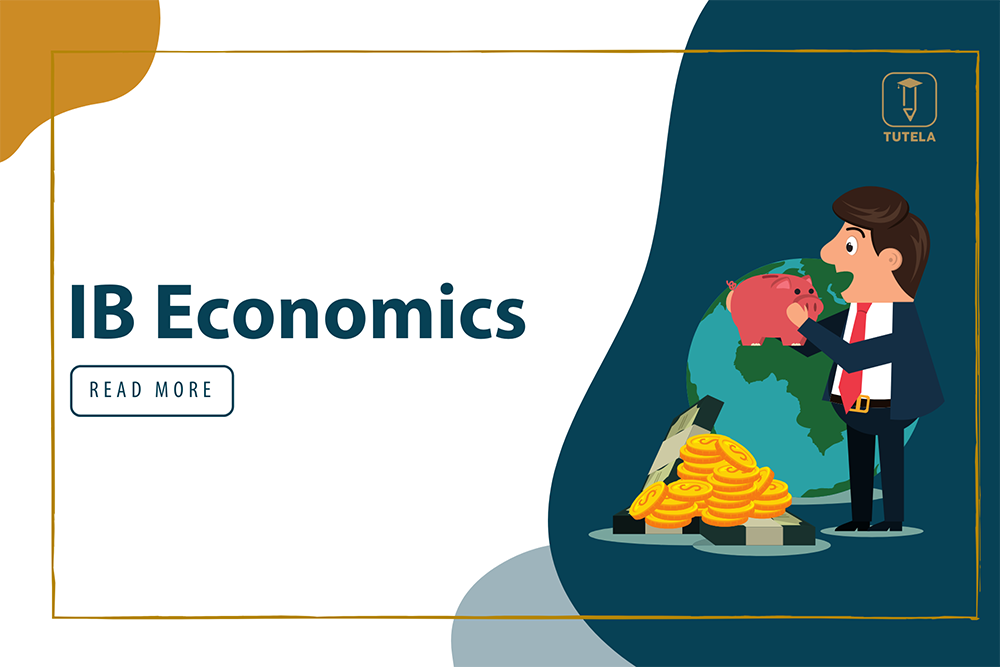
Subject Brief (Economics)
The IB diploma programme is developed in a precise and academically challenging method, designed to prepare students of ages 16 and 19 for success at their universities and life beyond that. The programme encourages students to be curious, inquisitive, and knowledgeable towards their academics as well as caring and compassionate towards their fellow students. It fosters an intercultural understanding, open-mindedness, and an attitude that is necessary to respect and assess a variety of opinions and viewpoints of others. The teaching and subsequently learning experience in this Diploma Programme is prepared with deliberate strategies, skills, and attitude that allows the students to broaden the horizons of their minds.
Course Description
Economics is the study of dynamic social science. The study of the subject is imperative for the dealings of scarcity, resource allocation, and the methods and processes with which choices are made to satisfy human wants. As a social science, the subject of economics uses scientific methodologies which include qualitative as well as quantitative elements.
The Diploma Programme of Economics emphasizes the theories of microeconomics which deals with the economic variables that affect individuals, business firms, and the markets that they are established in, and also the theories of macroeconomics which deals with economic variables that affect countries, governments, and societies on a larger scale. This programme not only teaches these theories to the students in a vacuum but also allows them to apply these theories in real-world scenarios and issues. One of the major issues that the students are encouraged to deal with is the fluctuations in economic activities, international trade, economic development, and environmental sustainability.
The course encourages students to develop an international perspective, cultivate a concern for global issues and advance students' awareness of their responsibilities towards their local, national as well as international levels.
The aim of the course-
Develop and work on understanding in the students the theories of microeconomics and macroeconomics, their concepts, and their real-world implications and applications. Render an appreciation of the impact of these theories on an individual as well as societies of economic interactions between nations. An awareness of the development issues facing nations as they undergo the process of change.
Curriculum Model and its Overview-
Section 1: Microeconomics—————-——————————–95
1.1 Competitive markets: demand and supply.
1.2 Elasticity.
1.3 Government intervention.
1.4 Market failure.
1.5 Theory of the firm and market structures.
Section 2: Macroeconomics—————-——————————-50
2.1 The level of overall economic activity.
2.2 Aggregate demand and aggregate supply.
2.3 Macroeconomic objectives.
2.4 Fiscal policy.
2.5 Monetary policy.
2.6 Supply-side policies.
Section 3: International economics————————————–45
3.1 International trade.
3.2 Exchange rates.
3.3 The balance of payments.
3.4 Economic integration.
3.5 Terms of trade.
Section 4: Development economics————————————-30
4.1. Economic development.
4.2. Measuring development.
4.3. The role of domestic factors.
4.4. The role of international trade.
4.5. The role of foreign direct investment (FDI).
4.6. The roles of foreign aid and multilateral development assistance.
4.7. The role of international debt.
4.8. The balance between markets and intervention.
Assessment Model
There are mainly four assessment objectives that students need to fulfil for the diploma programme of economics course. Having completed the course on a higher level, the students are expected to meet the following objective-
Demonstrate knowledge and understanding of the common SL/HL syllabus.
Demonstrate knowledge and understanding of current economic issues and data.
Demonstrate knowledge and understanding of the HL extension topics
Apply economic concepts and theories to real-world situations.
Identify and interpret economic data.
Demonstrate the extent to which economic information is used effectively in particular contexts.
Demonstrate application and analysis of the extension topic.
Examine economic concepts and theories.
Use economic concepts and examples to construct and present an argument.
Discuss and evaluate economic information and theories.
Demonstrate economic synthesis and evaluation of the extension topics.
Produce well-structured written material, using appropriate economic terminology, within specified time limits.
Use correctly labelled diagrams to help explain economic concepts and theories.
Select, interpret and analyze appropriate extracts from the new media.
Interpret appropriate data sets.
Use quantitative techniques to identify, explain and analyze economic relationships
Sample Questions
Paper 1
Explain why firms in monopolistic competition can make economic profit in the short run only.
Compare and contrast the market structures of monopoly and monopolistic competition.
Paper 2
State two reasons why a multinational corporation (MNC) may wish to invest in an economically less developed country (LDC).
Also Recommended: International Baccalaureate (IB) Curriculum in India.
For any help, feel free to contact us by filling in our student assistance form.
SOURCE:https://www.ibo.org/